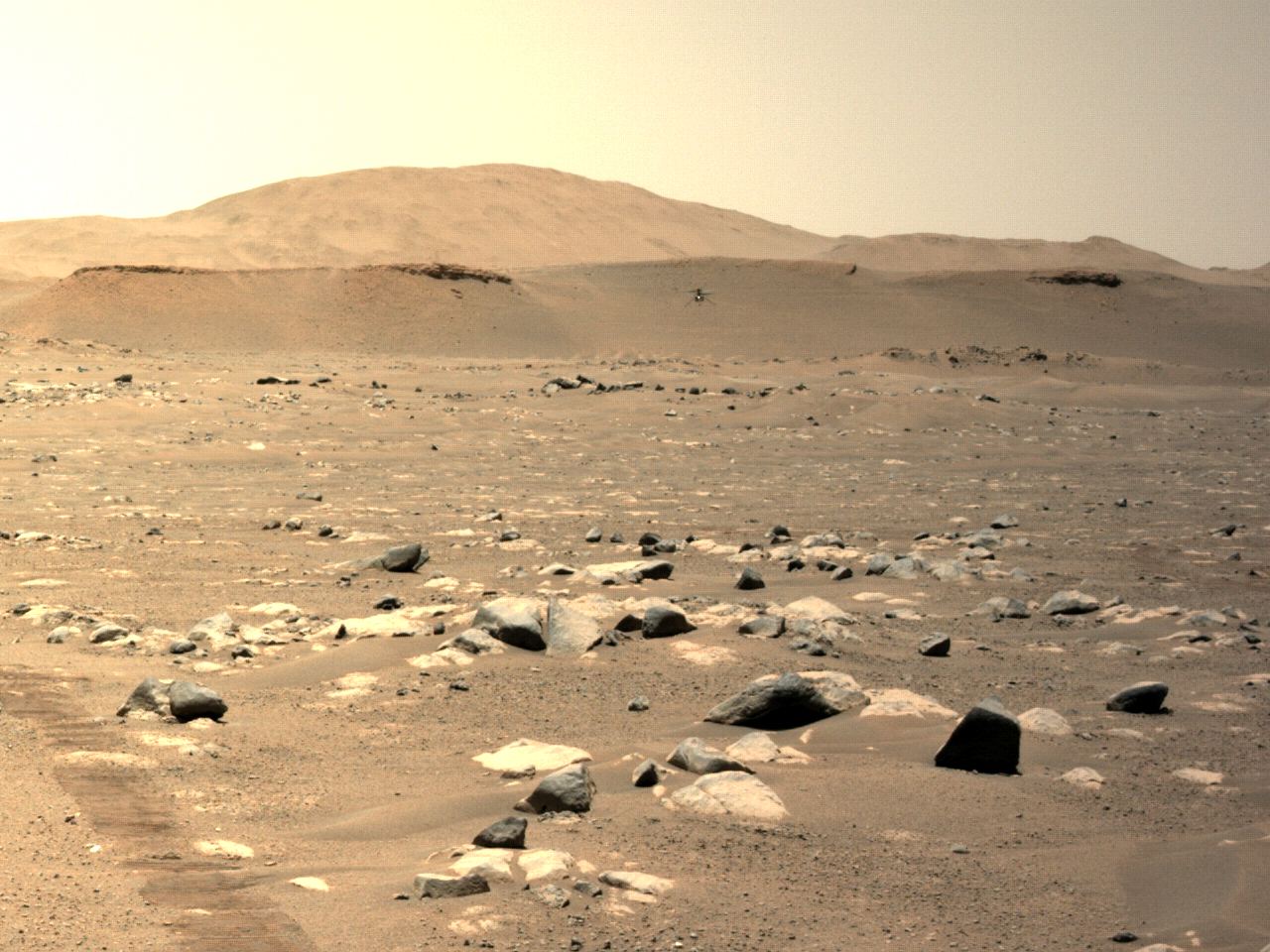On Feb. 18th, 2021, the Perseverance rover landed on Mars carrying the most advanced scientific instruments ever sent to another planet. It also carried experiments designed to push the envelope of exploration and help pave the way for crewed missions to Mars. This includes the Ingenuity Mars Helicopter, an experimental flight system designed to see if aerial systems can operate in the Martian atmosphere.
After making its inaugural flight on April 19th, Ingenuity has taken to the air twice more and set many records in the process. During its most recent test flight (which took place on the morning of April 25th), the helicopter flew farther and faster than ever before. All told, the helicopter covered a distance of 50 meters (164 feet) in 80 seconds, reaching a top speed of 2 m/s (6.6 feet per second) or 7.2 km/hour (4.5 mph).
The flight began at 12:33 p.m. Mars Standard Time (MST) – or 04:31 a.m. EDT and 01:31 a.m. PDT here on Earth – with the helicopter ascending to 5 m (16 ft) – the same altitude as its second flight. Less than six hours later (at 10:16 a.m. EDT; 07:16 a.m. PDT), the Ingenuity team at NASA’s Jet Propulsion Laboratory (JPL) began receiving information from Perseverance, which was monitoring the flight with its Mastcam-Z mounted camera system.
The team was thrilled with the footage, which showed the helicopter fly out of view and travel farther and faster than ever – even during test flights here on Earth. The data obtained from this flight will inform not just additional Ingenuity flights, but possible Mars rotorcraft in the future. Said Dave Lavery, the program executive for Ingenuity at NASA’s HQ in Wahsington DC:
“Today’s flight was what we planned for, and yet it was nothing short of amazing. With this flight, we are demonstrating critical capabilities that will enable the addition of an aerial dimension to future Mars missions.”
The Ingenuity team also took this opportunity to push the helicopter’s limits by adding instructions, which included telling it to take more pictures using both its color camera and black and-and-white navigation camera. Whereas the color camera took its first pictures during the second flight, the black-and-white navigation camera was put through its paces with this latest flight.
This consisted of its ability to track surface features beneath the helicopter and process the images it takes onboard. These are essential to Ingenuinity‘s flight computer, which autonomously flies the helicopter based on instructions it receives hours before data can make it back to Earth. As it covers greater distances, more images are taken to keep track of its flight path and ensure it doesn’t travel too fast to lose track of surface features.
As noted already, this third test flight exceeded anything Ingenuity was able to perform during test runs here on Earth. These took place inside vacuum chambers at JPL, which are filled with a thin (primarily carbon dioxide) atmosphere to simulate conditions on Mars. Unfortunately, these chambers are very tight and only allow vehicles as small as Ingenuity to move about half a meter (1.6 feet) in any direction.
In order to be sure that the camera could track the surface as the helicopter flew much greater distances on Mars, the team had to make sure everything was in working order. “When you’re in the test chamber, you have an emergency land button right there and all these safety features,” said Gerik Kubiak, a JPL software engineer. “We have done all we can to prepare Ingenuity to fly free without these features.”
These preparations were largely focused on the algorithm that tracks surface features, but also included the software and hardware that ensures that dust and environmental factors do not interfere with the exposure of images. “This is the first time we’ve seen the algorithm for the camera running over a long distance,” said MiMi Aung, the helicopter’s project manager at JPL. “You can’t do this inside a test chamber.”
Like everything else about these flights, these additional steps in verification are meant to provide insights that will help in the planning of future missions. The Ingenuity Mars Helicopter team is currently planning future missions, with the possibility of a fourth flight in the coming days. With so much accomplished so far, it’s hard to imagine what milestones and records they can look forward to achieving.

